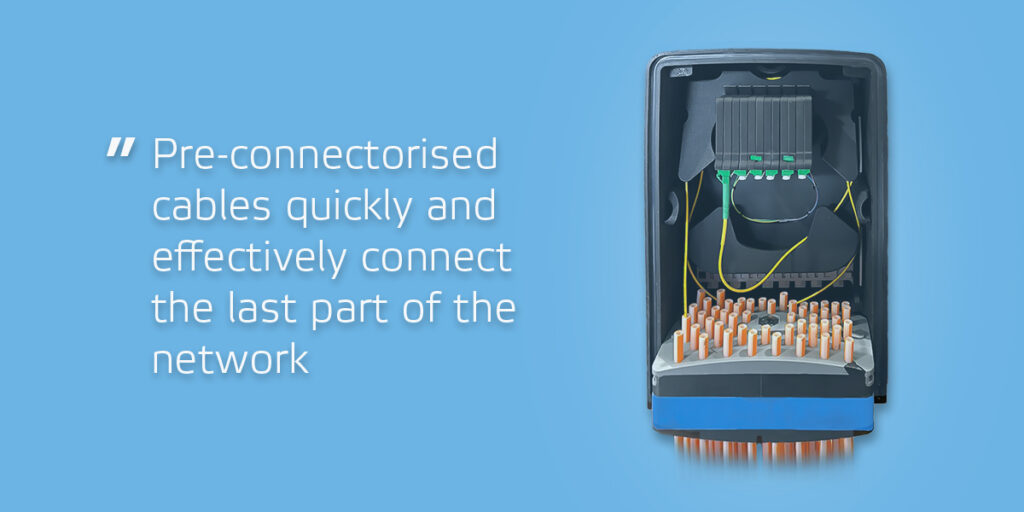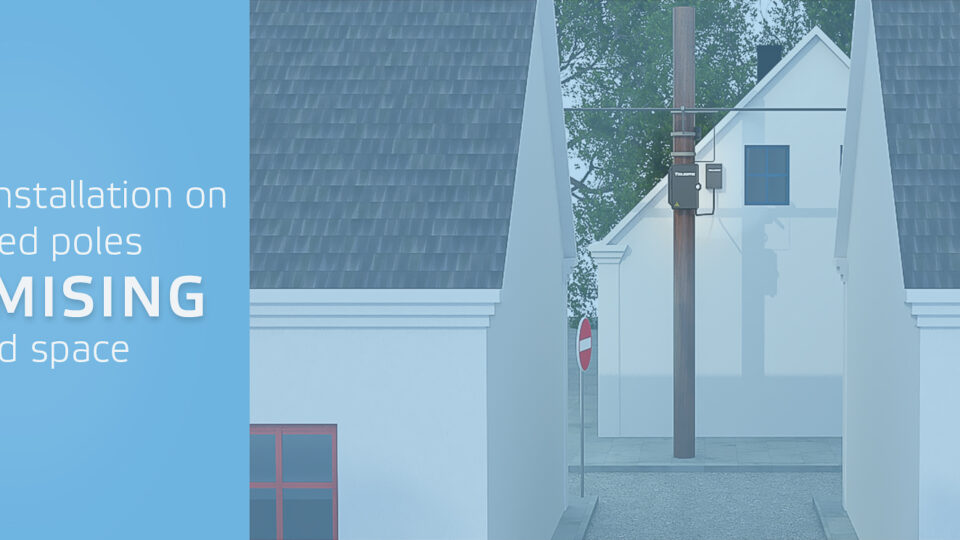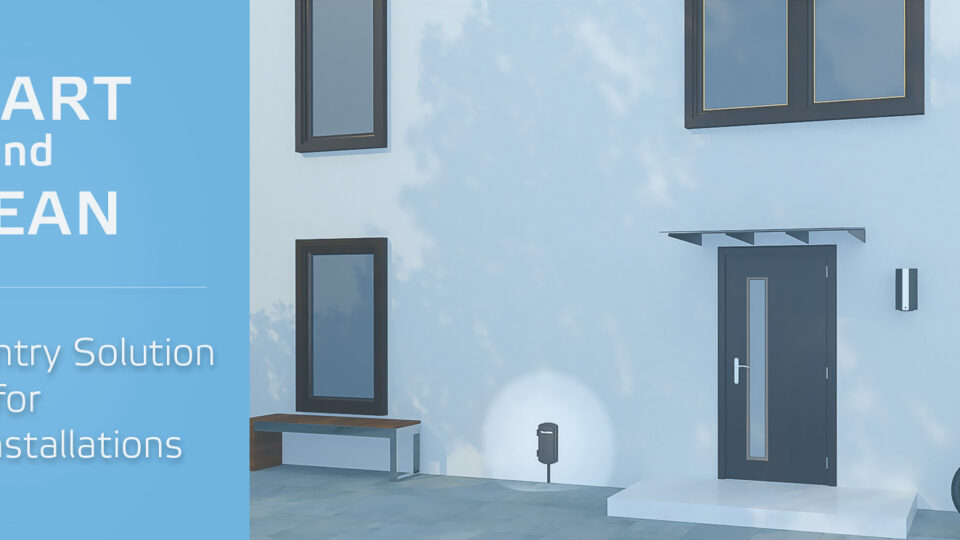
Enabling efficient FTTx customer DROP connections
Connecting FTTH customers with fast and easy to use pre-connectorised drop cables is getting more popular as one of the most used ways for the last mile. Tune in to discover the latest from modern drop installations to set up your own drop installations strategy.
Using pre-connectorised cables to connect customer premises has been proven to be the fast and effective way to get the last part of the network connected. The essence of this strategy is the distribution or network termination point, which on top of terminating the core network, also provides easy to use connectorised access to connect customers whenever they need to be connected. Obviously, your selected strategy is highly affected by local legislation related to aerial installations or availability of re-using any preinstalled ducts and tubing. Let us explore these options in more detail in the following.

In some markets the obvious but not the most aesthetic solution is the overhead or aerial installation. This is for sure cheaper and faster compared to any excavation work and also well adapted in many parts of the world. Utilising poles as the location for the drop point, you should consider having a weatherproof terminal integrated with slack cable management giving enough access length to take the enclosure to ground level for installation. The enclosure should have a separate closeable compartment for core network cable termination and easy to access drop connections side secured under weatherproof lid. The drop side should be with toolless access to connectors having easy to use cable glands for fast drop installations able to be fitted without extra training. On top of being compact enough to be fitted to congested poles or other locations, it should support the commonly used splitting ratios of 1:8, 1:16 and even 1:32. This results in optimum number of 32 customers per terminal.

On the other side of the aerial drop you are looking for a simple way for entering customer premises. Over here you should consider a demarcation point outside the building having a neat aesthetic design being on front of building wall and easy access for possible repairs or later updates. A small and simple facade enclosure with cable entrance through back supporting with adapter and/or splicing would be ideal to connect the indoor cable to the drop cable. Drop solutions via underground ducts are getting more popular due to wider adoption of microducts especially in greenfield areas and now also more and more for brownfield deployments. Underground installation has benefits compared to aerial, being hidden from sight and safe inside ground providing better error and weather proofness especially in the northern climate.
To begin with your underground drop strategy, you need to find a place for your drop point. It can be a street cabinet or underground enclosure depending on what is available and allowed in the neighbourhood. One can debate if the underground structure is more appealing due to no need to build any visual constructions on site. In modern formats the underground drop enclosures are compact and easy to use giving competitive choice for your drop point. Even street cabinet like underground structures exists, which you can lift up for installation and then hide underground when they are not needed to access. You want to serve the maximum customers from your drop point, benefitting from a solution having enough drop connections. 48 usually being a good compromise from size point making the enclosure/terminal compact enough to fit in manholes which are getting congested and not having too much space. Again, you need separated and sealed compartment for network cable termination and protection supported with easy to access drop side with toolless entry and fast connecting of the drop cables.
Getting closer to customer premises you have several options on how to make the final connection with your drop cable. The simplest would be to enter microduct directly inside the house and use push or blown cable entering directly to a wall outlet with gas block support and proper space for large enough cable bending radius. You might still consider a demarcation point outside the house to help to distinguish the core network installation from indoor installation as it is not always the easiest to agree when you can visit end customer homes but at the same time you want to make sure your core network is fully completed in one set when you have the team at site.

The demarcation point can be a neat and aesthetic enclosure on the house wall supporting direct microduct entry with gas block support and preferably cable entrance from the back of the enclosure through a house wall. It should also support easy connecting of indoor cable to network cable. Other possibility is to have the demarcation point placed underground close to the house at the property either having a lid structure visible at the pavement or above ground or having it totally buried underground. The local legislation may have requirements for the structures you can use. The underground demarcation point should support entering with microducts and have space to store some slack cable and build in compact customer connection enclosure helping you to connect the indoor and core network cables.
In this text several options for your drop connection strategy were presented giving you options to adapt on varying legislation and existing infrastructure. At your drop point, you should always consider separating the core network cable installation from drop connection side and making sure the drop cable installations can be done easily without the need for tools or detailed trainings. When entering the buildings and especially homes, it might be useful to have a demarcation point located outside for easy access whenever needed to help you complete your network build in one shot and give more freedom to schedule visits at customer premises for indoor installations.
Sami Lallukka
Sami Lallukka
As Director of Optical Passives for Teleste, I’m passionate about delivering product solutions for FTTx networks. See my LinkedIn.



